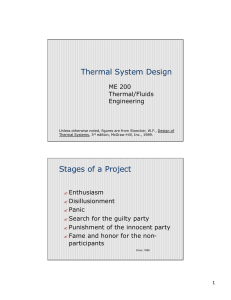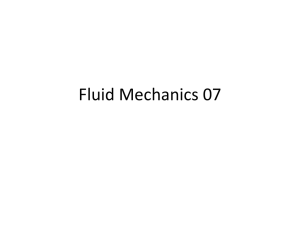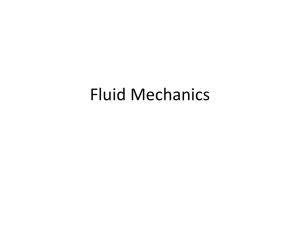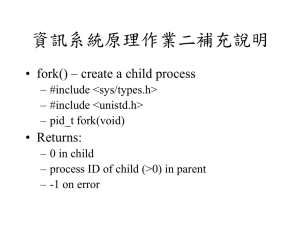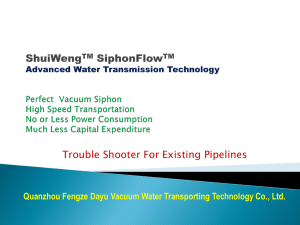Document
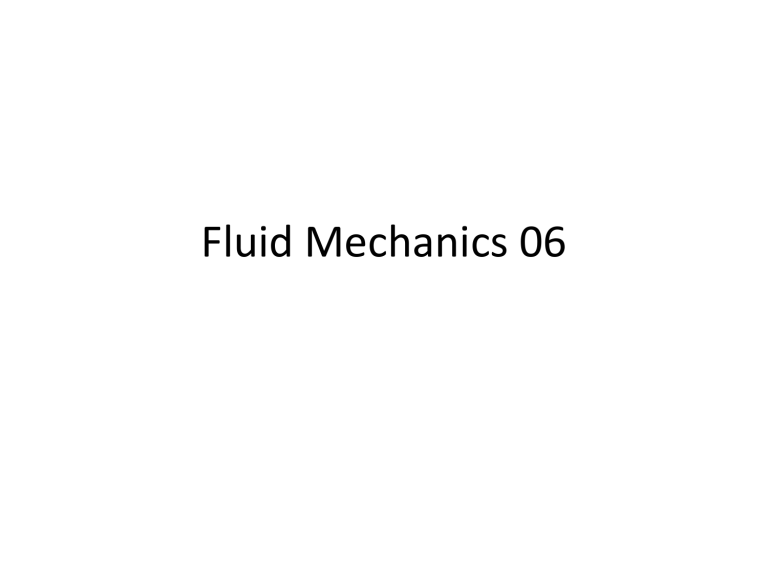
Fluid Mechanics 06
Energy, Work and Power
Work:- Work is force acting through a distance when the force is parallel to the direction of motion.
Energy:- Types of Work Stored like kinetic energy, potential energy, thermal energy.
Power:- Power expresses a rate of work or energy
Work and Energy Units
Common units include the joule (J), newtonmeter, watt-hour (Wh), foot-pound-force
(ft-lbf), calorie (cal), and the British thermal unit (Btu). Where
Btu = 1055 J(It is the amount of energy needed to heat one pound of water by one degree
Fahrenheit)
Cal = 4.2 J(it is the amount of thermal energy needed to raise the temperature of 1 gram of water by 1°C) ft-lbf = 1.356 J
Power Units
Common units for power are the watt (W), horsepower (hp), and the ft-lbf/s.
Where
1 hp = 550 ft-lbf/s.
1 hp = 745.7 watt
Energy Equation
First Law of thermodynamic
𝑄ʹ − 𝑊ʹ = 𝑑𝐸 𝑑𝑡
Thermal energy is positive when there is an addition of thermal energy to the system and negative when there is a removal.
Work is positive when the system is doing work on the environment and negative when work is done on the system.
Pipe Flow Energy Equation
𝑃1 ɣ 𝑣1
2
+ 𝑧1 +
2∗𝑔
+ ℎ𝑝 =
𝑃2 ɣ 𝑣2
2
+ 𝑧2 +
2∗𝑔
+ ℎ𝑡 + ℎ𝐿
The preview equation based on three main assumptions:-
(a)the flow is steady.
(b) the control volume has one inlet port and one exit port.
(c) the density of the flow is constant.
Example
A horizontal pipe carries cooling water at 10°C for a thermal power plant from a reservoir as shown. The head loss in the pipe is where L is the length of the pipe from the reservoir to the point in question, V is the mean velocity in the pipe, and D is the diameter of the pipe. If the pipe diameter is 20 cm and the rate of flow is 0.06 m3/s, what is the pressure in the pipe at L = 2000 m.
Solution
𝑃1
+ 𝑧1 + ɣ
Where 𝑣1
2
2∗𝑔
+ ℎ𝑝 =
𝑃2 ɣ
P1=Patm=0, v1=0, hp=0, ht=0 𝑣2
2
+ 𝑧2 +
2∗𝑔
+ ℎ𝑡 + ℎ𝐿
Z1=100m, z2=20m 𝑣2 = ℎ𝐿 =
𝑄2
𝐴
=
0.02∗
0.2
0.06
Π
4
2000
∗(0.2
2 )
∗1.912
= 1.910 m/s
2
= 37.2 m
2∗9.81
100 =
𝑃2
1000 ∗ 9.81
+ 20 +
1.91
2
2 ∗ 9.81
+ 37.2
From the Equation P2 = 418 KPa
Power
𝑃𝑜𝑤𝑒𝑟 = 𝑚ʹ ∗ 𝑔 ∗ ℎ
There are loses in energy due to factors such as mechanical friction and leakage.
Efficiency is the ratio of power output to power input
Then
𝐼𝑛𝑝𝑢𝑡 𝑃𝑜𝑤𝑒𝑟 = 𝝶 ∗ 𝑚ʹ ∗ 𝑔 ∗ ℎ
Example
A pipe 50 cm in diameter carries water
(10°C) at a rate of 0.5 m3/s. A pump in the pipe is used to move the water from an elevation of 30 m to 40 m. The pressure at section 1 is 70 kPa gage and the pressure at section 2 is 350 kPa gage. What power in kilowatts and in horsepower must be supplied to the flow by the pump? Assume
hL = 3 m of water.
Solution
𝑃1
+ 𝑧1 + ɣ
Where 𝑣1
2
2∗𝑔
+ ℎ𝑝 =
𝑃2 ɣ
P1=70000 Pa, P2=350000 Pa 𝑣2
2
+ 𝑧2 +
2∗𝑔 z1=30 m, z2=40m
V1=v2, Ht=0, hL=3m
70000
1000 ∗ 9.81
+ 30 + ℎ𝑝
=
350000
1000 ∗ 9.81
+ 40 + 3
+ ℎ𝑡 + ℎ𝐿
ℎ𝑝 = 41.5𝑚 𝑝𝑜𝑤𝑒𝑟 = 𝑚ʹ ∗ 𝑔 ∗ ℎ = 1000*0.5*9.81*41.5=204kW
Example
At the maximum rate of power generation, a small hydroelectric power plant takes a discharge of
14.1 m3/s through an elevation drop of 61 m. The head loss through the intakes, penstock, and outlet works is 1.5 m. The combined efficiency of the turbine and electrical generator is 87%. What is the rate of power generation?
Solution
𝑃1
+ 𝑧1 + ɣ
Where 𝑣1
2
2∗𝑔
P1=P2=Patm=0
+ ℎ𝑝 =
𝑃2 ɣ 𝑣2
2
+ 𝑧2 +
2∗𝑔
+ ℎ𝑡 + ℎ𝐿
Z1=61m, z2=0
V1=v2=0
Hp=0, hL=1.5m
Ht=61-1.5=59.5m
𝑃𝑜𝑤𝑒𝑟 = 𝑚ʹ ∗ 𝑔 ∗ ℎ =1000*9.81*14.1*59.5=8.23MW
𝑂𝑢𝑡 𝑃𝑜𝑤𝑒𝑟 = 𝝶 ∗ 𝑃𝑜𝑤𝑒𝑟 = 0.87 ∗ 8.23 = 7.16𝑀𝑊



